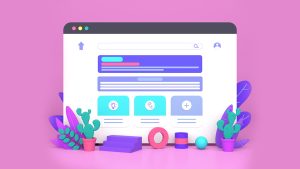 You’ve likely noticed that not all websites look great on every device. That’s where adaptive web design steps in, providing a more tailored solution than traditional responsive design. Instead of one-size-fits-all layouts, adaptive design uses fixed layouts optimized for specific screen sizes, enhancing user experience across smartphones, tablets, and desktops. This method not only speeds up load times but also guarantees content is presented consistently, meeting the unique needs of each device. Curious about how adaptive design can transform your digital strategy? Let’s explore its key differences and benefits.
You’ve likely noticed that not all websites look great on every device. That’s where adaptive web design steps in, providing a more tailored solution than traditional responsive design. Instead of one-size-fits-all layouts, adaptive design uses fixed layouts optimized for specific screen sizes, enhancing user experience across smartphones, tablets, and desktops. This method not only speeds up load times but also guarantees content is presented consistently, meeting the unique needs of each device. Curious about how adaptive design can transform your digital strategy? Let’s explore its key differences and benefits.
Understanding Adaptive Web Design
Imagine visiting a website that effortlessly adapts to your device, providing an ideal viewing experience no matter what screen size you’re using. That’s the magic of adaptive web design. It uses multiple fixed layouts tailored for different devices, ensuring your content looks perfect whether you’re on a smartphone, tablet, or desktop. This approach enhances usability, delivering a seamless, visually-appealing experience every time.
Key Differences From Responsive Design
While both adaptive and responsive web design aim to optimize user experience across devices, they employ fundamentally different techniques to achieve this goal. Adaptive design uses multiple fixed layouts for specific screen sizes, ensuring tailored experiences. In contrast, responsive design relies on flexible grids and media queries to fluidly adjust to any screen size. You’ll see more precise control with adaptive design.
Benefits of Adaptive Design
Adaptive design offers a tailored user experience by delivering specific layouts optimized for different devices. You’ll notice faster load times, which keeps your audience engaged. It enhances usability with intuitive interfaces, ensuring that content looks perfect whether viewed on a smartphone, tablet, or desktop. By focusing on device-specific needs, you create a visually appealing and functional experience for every user.
Implementing Adaptive Strategies
To implement effective adaptive strategies, start by analyzing your user data to understand the specific needs and behaviors of your audience across different devices. Create wireframes for various screen sizes, and make certain your design elements are flexible. Test your designs on real devices. Use conditional loading to optimize performance, serving only what’s necessary for each device. Prioritize user experience and accessibility.
 lightweight code, and embracing lazy loading can save energy. Have you considered green hosting providers that rely on renewable energy sources? Streamlining your site’s functionality and focusing on essential content not only benefits users but also promotes environmental responsibility. Curious about how these practices can transform your digital presence?
lightweight code, and embracing lazy loading can save energy. Have you considered green hosting providers that rely on renewable energy sources? Streamlining your site’s functionality and focusing on essential content not only benefits users but also promotes environmental responsibility. Curious about how these practices can transform your digital presence?